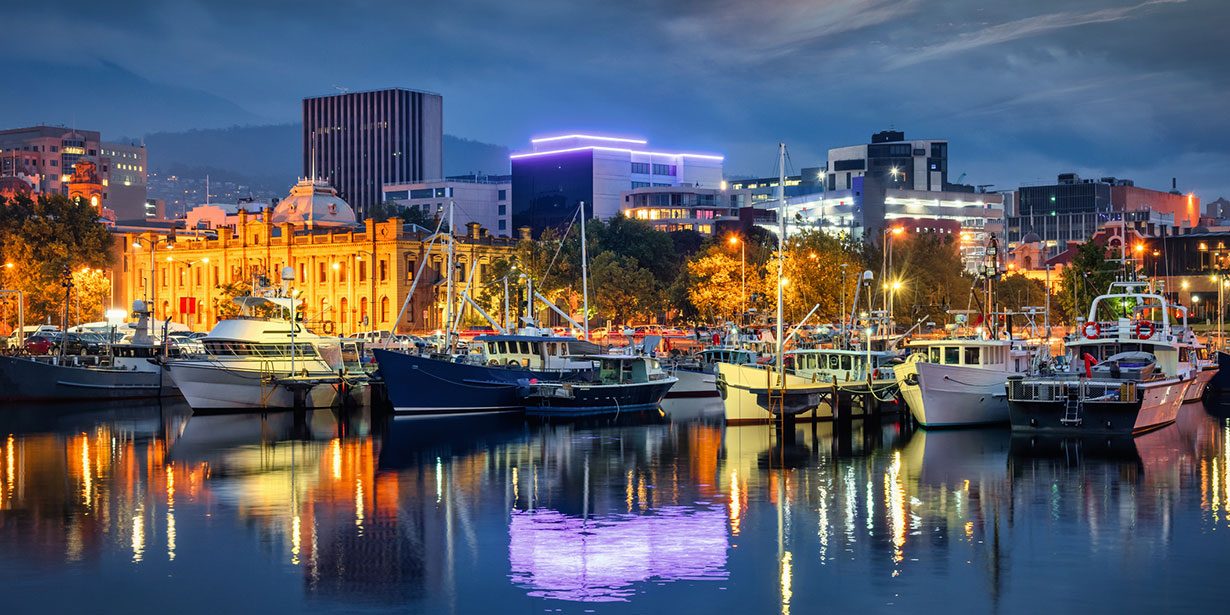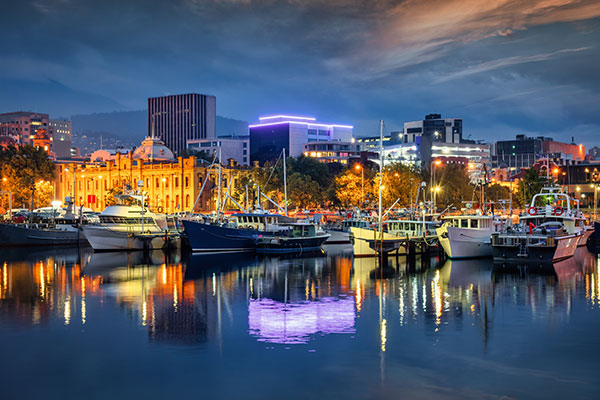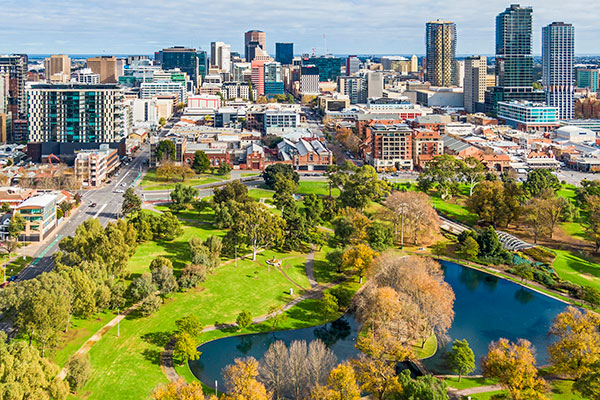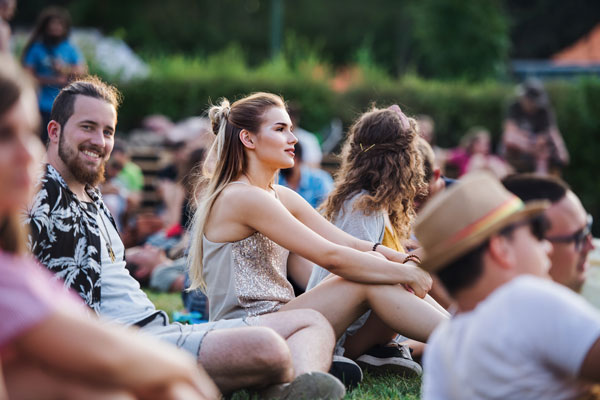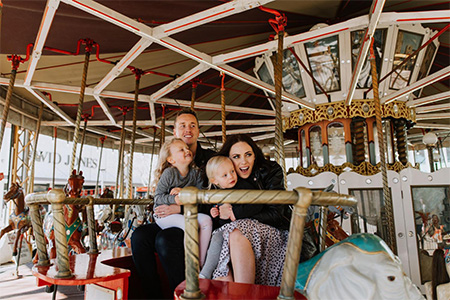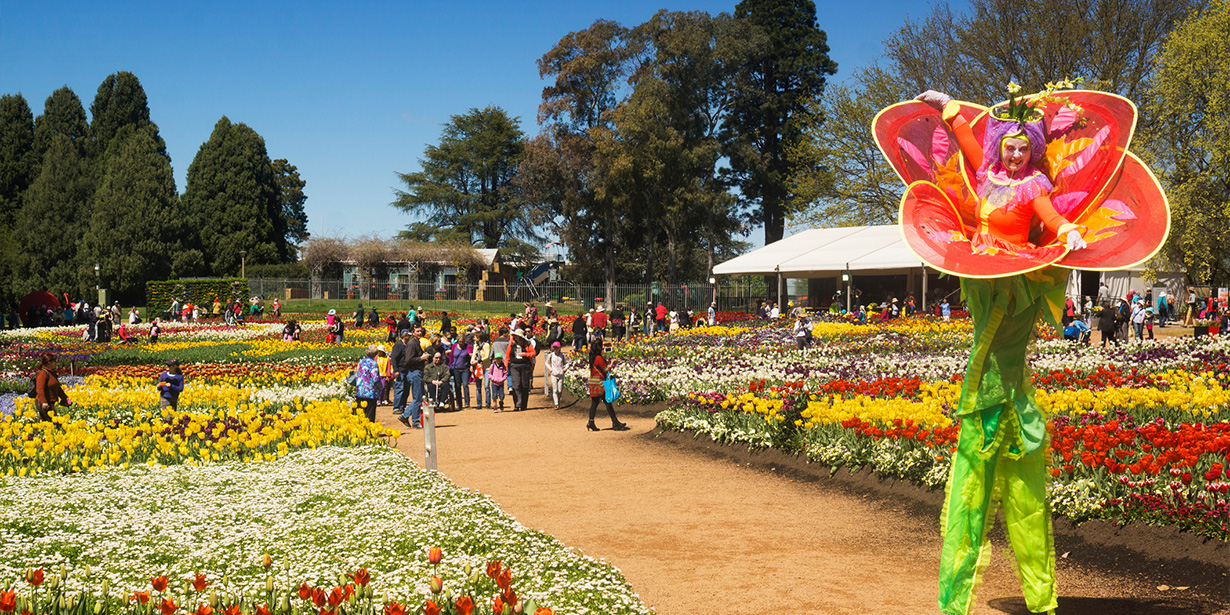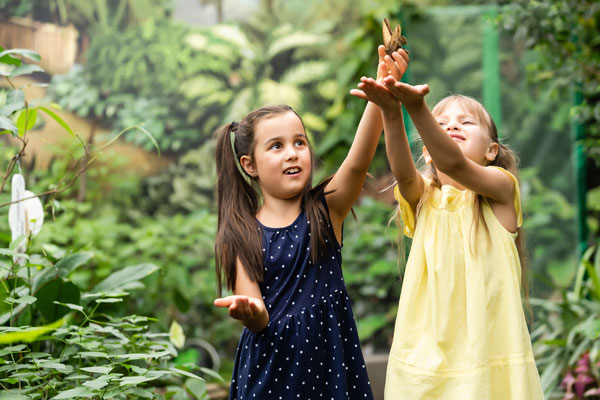Here, markets meet museums, and every meal is a conversation between land, sea, and imagination.
This TFE Hotels guide is your backstage pass to the city’s evolving culinary identity — where to eat, what to taste, and where to stay when you want to feel part of Hobart’s rhythm, not just its view.
1. Salamanca Place: Where Tasmania’s Flavour Was Born
No address defines Hobart more than Salamanca Place — once a row of 19th-century warehouses, now the centre of its sensory economy.
Stay nearby at Vibe Hotel Hobart — a short stroll from the cobblestones and perfectly positioned between waterfront heritage and mountain horizon.
Why food lovers start here:
- The Salamanca Market (Saturday, since 1972) remains the beating heart of Tasmanian produce
- Over 300 local growers, bakers, distillers, and artisans showcase the island’s seasons
- The area houses Hobart’s highest concentration of chef-owned restaurants — from casual cafés to hatted icons
Rare insight:
Tasmania’s “paddock-to-plate” reputation began here — not as marketing, but survival. Hobart’s isolation forced chefs to work directly with farmers. That necessity evolved into identity. Today, 95% of Salamanca stallholders supply local kitchens within a 50 km radius.
Local ritual:
Arrive by 8 a.m., coffee from Villino Street Cart in hand. Sample a truffle-and-cheddar pie from Lady Hester, then walk toward Freycinet Marine Farm’s oyster stand — shucked seconds before serving.
2. Hobart Waterfront: The Dockside Degustation
Steps from Salamanca, Constitution Dock fuses fishing heritage with modern gastronomy.
Vibe Hotel Hobart rises just behind the waterfront, its glass façade reflecting Mount Wellington. Inside: calm luxury, locally sourced interiors, and rooms where the city’s hum fades into the harbour’s rhythm.
Where to dine:
- The Glass House — suspended over the water, blending Japanese precision with Tasmanian seafood
- Frank Restaurant — fire-grilled Patagonian influences using Bruny Island lamb
- Mures Upper Deck — vertical integration at its finest: boat below, restaurant above
Rare insight:
Hobart is one of the few cities where chefs buy directly from the harbour. Each dawn, skippers unload on the docks behind the restaurants — scallops, rock lobsters, and abalone changing hands within minutes. That’s why menus list the boat’s name, not just the fish.
Local tip:
Try Mako’s fish-and-chips at sunset; its line of locals is longer than any tourist queue.
3. MONA & Berriedale: Where Art Tastes Like Philosophy
MONA – The Museum of Old and New Art — is less museum, more pilgrimage. Its architecture cuts into the earth; its dining rises above it.
Reach it by ferry from Brooke Street Pier, a 25-minute glide that feels ceremonial.
Eat & drink:
- The Source — seasonal degustations overlooking the vines
- Moorilla Winery — fine cool-climate wines born from the same soil as the museum
- Moo Brew — experimental craft beers exclusive to MONA’s grounds
Rare insight:
MONA accounts for 20% of Tasmania’s annual tourism revenue, but its biggest cultural export is mindset. It redefined “luxury” in Hobart — from white-tablecloth exclusivity to raw, sensorial honesty. Its chefs forage as its artists provoke.
Pro tip:
Book The Source for a late lunch. At 2 p.m. the day-trippers leave; the dining room falls silent except for the Derwent’s shimmer and the clink of Tasmanian pinot glasses.
4. North Hobart: Where Locals Eat After Hours
Just five minutes uphill lies North Hobart — compact, authentic, and quietly extraordinary.
What to expect:
- The 1 km Elizabeth Street “Eat Street” lined with 40+ independent venues
- Templo — intimate 20-seat Italian where menus are written daily
- Dier Makr — Australia’s smallest fine-dining restaurant, and arguably its most daring
- Willing Bros Wine Merchants — a sommelier’s living room, not a bar
Rare insight:
North Hobart has the highest restaurant density per capita in Australia — one venue per 170 residents. It’s also the city’s experimental lab; dishes trialled here often shape national trends six months later.
Local ritual:
Start with vermouth at Templo, wander to Dier Makr for six courses, finish at Rude Boy rum bar for a nightcap of island molasses.
5. Farm Gate Market & Provenance Culture
Each Sunday, Bathurst Street transforms into Farm Gate Market, where chefs buy side by side with locals.
Why it’s unmissable:
- 70+ producers selling only Tasmanian-grown goods
- Live cooking demonstrations by leading chefs each fortnight
- Street buskers and distillers create a festival atmosphere year-round
Rare insight:
Farm Gate is the only market in Australia enforcing a “100% local rule.” Everything must be grown, caught, or crafted within state borders. It’s this closed-loop system that keeps Hobart’s dining scene uniquely self-sustaining — and fiercely proud.
Local tip:
Don’t miss Rough Rice’s truffle-egg scramble or Little Beetroot’s cider doughnuts — both sell out by 9 a.m.
6. Mount Wellington / kunanyi: Altitude & Appetite
Behind every plate in Hobart looms Mount Wellington / kunanyi, shaping the city’s microclimate — and its menu.
Why it matters:
- Its slopes feed the city’s water tables and mushroom forests
- The summit’s altitude (1,271 m) produces rare herbs used by local distillers
- From top to sea level, six distinct growing zones influence local terroir
Rare insight:
This mountain creates the cleanest rainwater on the planet (CSIRO, 2024). That purity drives Tasmania’s whisky and gin industry — the island now hosts over 90 registered distilleries, the highest per capita globally.
Local ritual:
Hike early, descend to Cascade Brewery Bar for a post-trail pint — brewed on site since 1824 — then return to the city for oysters and single malt by nightfall.
7. Hobart’s Seasons of Taste
| Season | What’s in Season | Experience | Insider Edge |
| Summer (Dec–Feb) | Berries, abalone, shellfish | Harbour festivals & al fresco dining | Book early for waterfront rooms |
| Autumn (Mar–May) | Apples, truffles, pinot noir | Harvest feasts & cellar doors | Ideal weather, thinner crowds |
| Winter (Jun–Aug) | Game meats, whisky, dark chocolate | Dark Mofo festival & fire-driven menus | Exclusive winter tasting menus |
| Spring (Sep–Nov) | Oysters, flowers, greens | Gardens in bloom & seafood galas | Best value for eClub members |
Rare insight:
Hobart flips the mainland food rhythm — winter is its culinary high season. Chefs design menus around fire, smoke, and ferment. For travellers, that means smaller crowds, open tables, and the richest flavours of the year.
8. Getting Around
- Airport to City: 20 minutes along the Derwent, one of Australia’s most scenic drives.
- Walkability: 94/100 — the city’s compact grid makes every meal walkable.
- Ferries: Hourly departures from Brooke Street Pier to MONA.
- Day Trips: Bruny Island (cheese & oysters), Huon Valley (apples & cider), Coal River Valley (pinot noir & truffles).
Local tip:
Book day tours with hotel pick-ups — most producers now partner with TFE-affiliated experiences for guests wanting behind-the-scenes tastings.
FAQs
1. Which TFE Hotel is closest to Hobart’s dining precincts?
Vibe Hotel Hobart — minutes from Salamanca, the Waterfront, and the CBD.
2. What days are the major markets open?
Salamanca Market – Saturdays; Farm Gate Market – Sundays.
3. How far is MONA from the city?
25 minutes by ferry or 20 minutes by car from the waterfront.
4. Where do chefs eat after hours?
North Hobart’s Templo and Dier Makr; late-night drinks at Willing Bros or Gold Bar.
5. Is Hobart’s seafood sustainable?
Yes — Tasmania enforces the strictest aquaculture regulations in the Southern Hemisphere.
6. What’s the best season for oysters?
Spring to early summer — cold estuaries yield peak flavour.
7. Do TFE Hotels offer local dining recommendations?
Yes — concierge teams curate bespoke “Taste Tasmania” itineraries for guests.
8. Are distillery tours nearby?
Lark, Sullivans Cove, and Hobart Whisky are all within 15 minutes of the city.
9. When are hotel rates best?
Mid-May to August — premium stays at lower occupancy with winter menus in full swing.
10. Why join eClub?
Instant savings, flexible check-in/out, and seasonal dining offers exclusive to members.
Conclusion
Hobart is more than a destination — it’s a dialogue between nature and nurture.
Markets become classrooms, chefs become storytellers, and every ingredient carries a sense of place.
From truffle stalls at dawn to candlelit dinners on the Derwent, TFE Hotels put you exactly where Tasmania tastes best — within walking distance of wonder.
Reserve Your Stay
Best experience, booked direct. Check live availability here
Join eClub to unlock instant rewards:
- Early check-in and late check-out (subject to availability)
- Free to join
- Better rates every time you book direct
- Exclusive offers only for members
- No points. No waiting. Just benefits the moment you sign up
